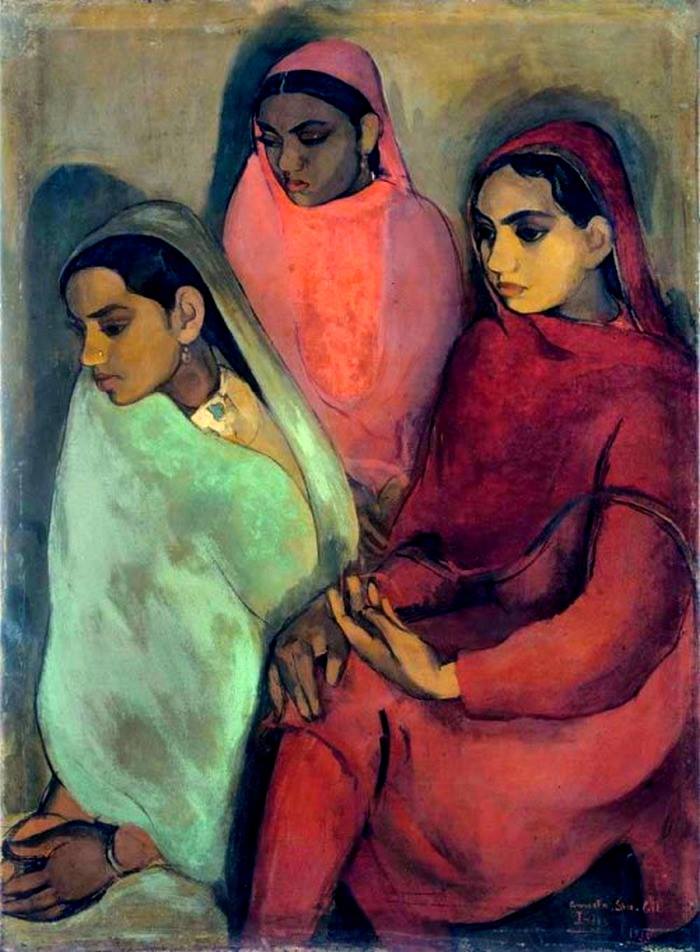Amrita Sher-Gil, Three Girls, 1935
Amrita Sher-Gil (1913-1941) was a prominent Indian painter born to a Punjabi Sikh father and a Hungarian Jewish mother. She was born in Budapest and spent her early childhood there before the family relocated to India. Sher-Gil trained in Paris and was influenced by such painters as Cezanne and Gauguin. Her style and subjects demonstrate quite a range, from French academic style to a traditionalist aesthetic, from a minimal painting of elephants to an elaborate nude portrait. Sher-Gil's mission was, in her own words, "to interpret the life of Indians and particularly the poor Indians pictorially; to paint those silent images of infinite submission and patience,... to reproduce on canvas the impression those sad eyes created on me." Three Girls is certainly in furtherance of that mission. The painting shows these young girls in contemplation of their futures and the limited choices that lay ahead for them. They are dressed brightly and their faces are rendered quite beautifully, but their sadness is evident. Sher-Gil always portrayed women with great strength of spirit, despite the difficult lives they so often faced. These three girls are not depicted with any surroundings or context, but their situation is made quite clear. Whether their marriages are imminent or not, they all face the same future over which they have no control. Sher-Gil conveys their emotions with every aspect of the painting, not just their faces. The brushwork is soft and molded to depict the beautiful texture and vividness of their garments, made more noticeable with the smoothness of their faces and hair. The two pairs of hands that are visible appear tense and uncertain. Very prominent are the girls' shadows, which significantly add to the drama and effectiveness of the scene.

No comments:
Post a Comment